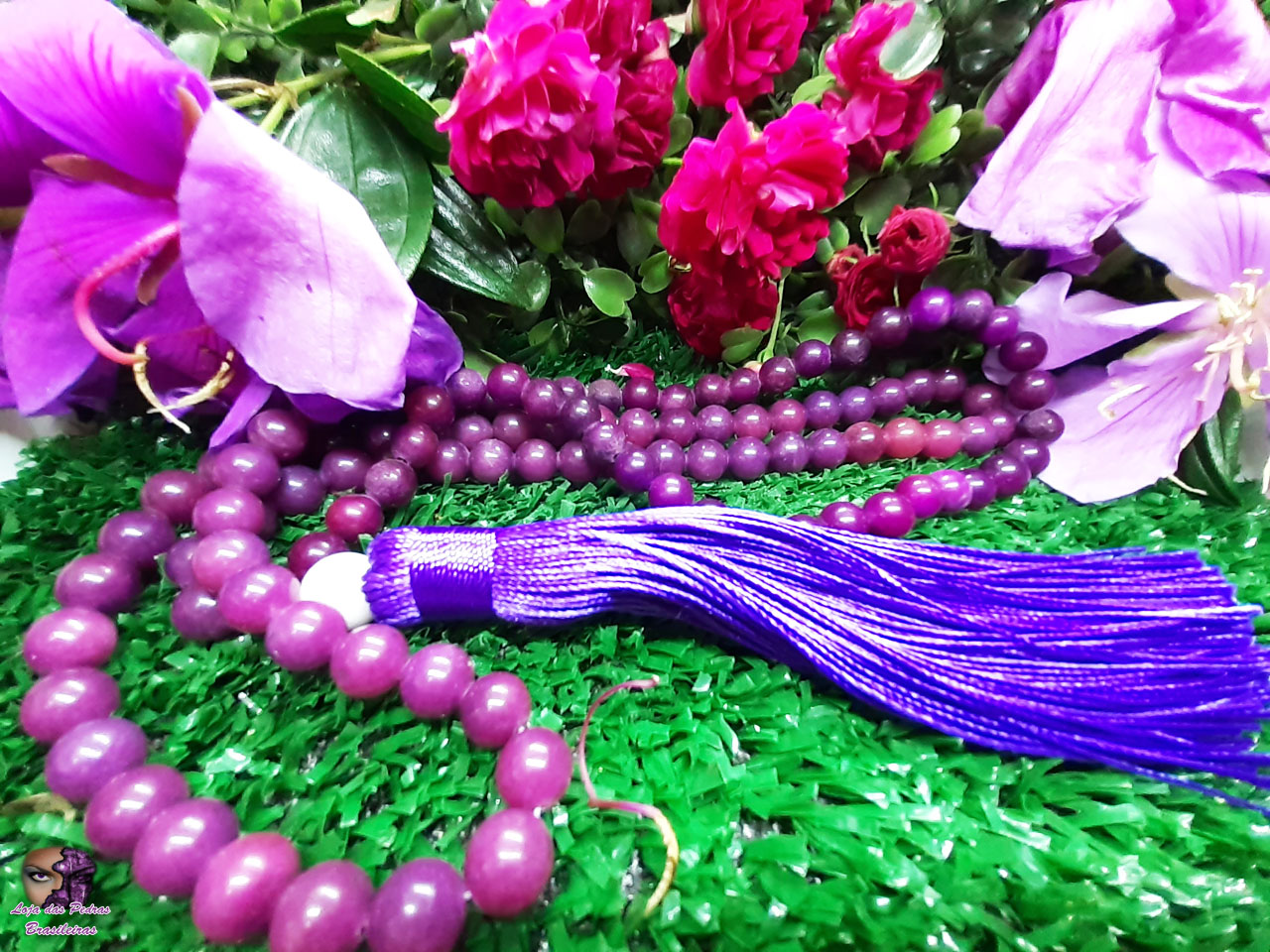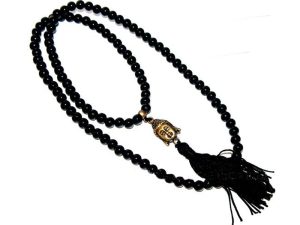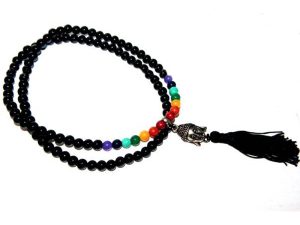Japamala With Natural Stones in Purple Agate (Rolled and sphere with Longitudinal Hole). The holes are MANUALLY in the middle of the stone, very central holes, the thread is a high quality Multifilament Line.NAME OF THE STONE(S): Purple AgateCOLOR OF THE STONE(S): Purple Illustrative PhotoCUT OF THE STONE(S) ) STONE(S): Holed SphereCLARITY OF STONE(S): Semi TransparentMEASUREMENT OF STONE(S): Average of 8 millimetersMEASUREMENT OF NECKLACE: 84 cmQUANTITY OF STONE: 100 TO 110 piecesFIND OUT MORE ABOUT JAPAMALAJapamala (japamālā, जपमाला) is a sacred string made of beads, used to help the meditator enter the meditative state[1]. In yoga and Hinduism, it generally has 108 beads or dividers (54 or 27). In some lines of Buddhism, it also has 3 markers, totaling 111 beads. The name japamala is masculine (“the” japamala), originates from Sanskrit and is a compound word: japa is the act of whispering or murmuring repeatedly mantras or names of deities and mālā means garland, wreath or crown[2]. ancient object of spiritual devotion, also known as prayer rosary in the West. It is a craft widely used to help with prayers and mentalizations as a marker. We then have two currents: a spiritual one, “Japa”, and a material one, “Mala”. Thus, the spiritual energies invoked “Japa” energize the “Mala”.[3]. A japamala is generally composed of 108 beads and the “meru”, a central bead that marks the beginning and end of the mala[4]. It is also possible to find smaller japamalas, varying from 27 or 54 beads, all subdivisions of 108. According to yogic philosophy, upon completing the circuit of 108 repetitions of prayer, mentalization or mantra, a higher stage of consciousness called transcendental is reached. (the stage that goes beyond the mind's fixations, keeping consciousness focused on itself). The parts of japamalaAlthough there is no rule about the parts that make up japamala,[5] some items are more frequent – or even mandatory – in japamala making. Among the most commonly observed parts are: Beads String Between Markers Meru Tassel or pointer.Meditation with japamalaMeditation using japamala, as well as the practice of mantras, has been used for centuries as a powerful tool to calm, center, heal and collaborate in spiritual evolution in order to seek the best of us. There are countless lineages of Hindu and Buddhist traditions that use japamala for mantra meditation. According to these traditions, the number 108 is very auspicious and meditation using japamala can be a tool to reach higher levels in spiritual evolution. How to use With posture and breathing controlled and relaxed, the meditator holds his japamala with one of the hands. Supporting it on your middle finger, use your thumb to pull each of the 108 beads each time the mantra or the name of the deity is mentalized or pronounced, a bead is pulled. The index finger should not touch the japamala beads, as it represents the ego and is associated with thought – and the objective of meditation is precisely to suspend the action of thought. The meru should not be counted like the other 108 beads, because it is the representation of Brahman, of the absolute, of our eternal and unchanging aspect and therefore is outside the wheel of samsara, however it is the meru that marks the beginning and end of the japamala cycle. Finishing the passage through the 108 beads, if the practitioner wants to continue and do another turn, they should not go over the meru instead, they should turn the string and continue doing the japa in the opposite direction. To be effective, meditation practice must be frequent.
Japamala With Natural Stones in Purple Agate
R$ 239,00
japamala-agata-roxa1.jpg
Out of stock




